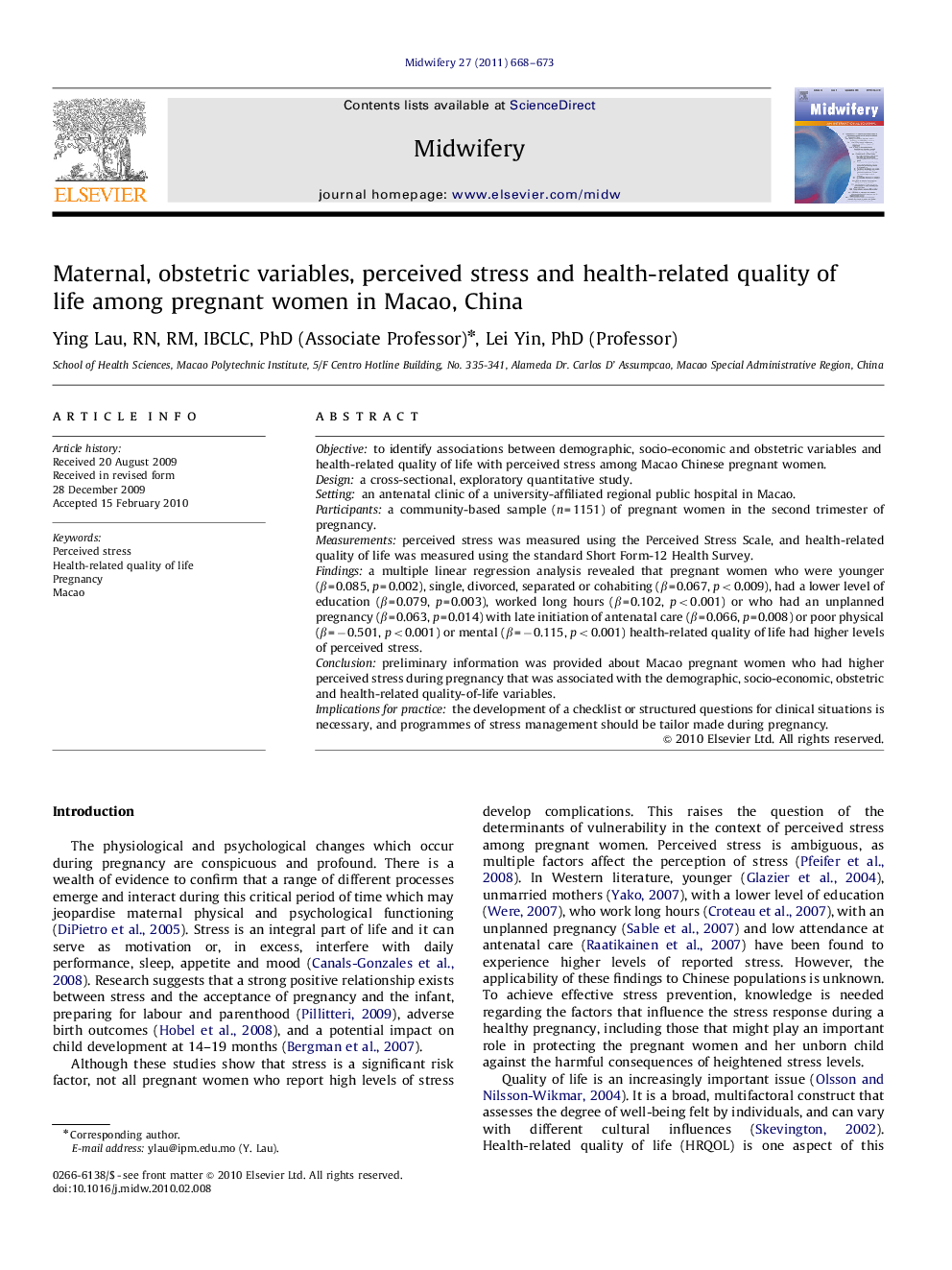| Article ID | Journal | Published Year | Pages | File Type |
|---|---|---|---|---|
| 1084680 | Midwifery | 2011 | 6 Pages |
Objectiveto identify associations between demographic, socio-economic and obstetric variables and health-related quality of life with perceived stress among Macao Chinese pregnant women.Designa cross-sectional, exploratory quantitative study.Settingan antenatal clinic of a university-affiliated regional public hospital in Macao.Participantsa community-based sample (n=1151) of pregnant women in the second trimester of pregnancy.Measurementsperceived stress was measured using the Perceived Stress Scale, and health-related quality of life was measured using the standard Short Form-12 Health Survey.Findingsa multiple linear regression analysis revealed that pregnant women who were younger (β=0.085, p=0.002), single, divorced, separated or cohabiting (β=0.067, p<0.009), had a lower level of education (β=0.079, p=0.003), worked long hours (β=0.102, p<0.001) or who had an unplanned pregnancy (β=0.063, p=0.014) with late initiation of antenatal care (β=0.066, p=0.008) or poor physical (β=−0.501, p<0.001) or mental (β=−0.115, p<0.001) health-related quality of life had higher levels of perceived stress.Conclusionpreliminary information was provided about Macao pregnant women who had higher perceived stress during pregnancy that was associated with the demographic, socio-economic, obstetric and health-related quality-of-life variables.Implications for practicethe development of a checklist or structured questions for clinical situations is necessary, and programmes of stress management should be tailor made during pregnancy.
